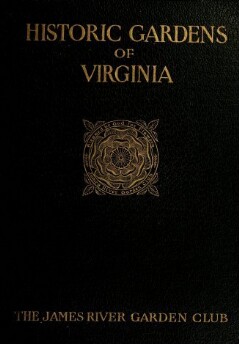Stranica 561 [561]
ANNEFIELD
mvaey|N 1790, Matthew Page, Esq., of Broadneck, Han¬
2) Dy over County, Virginia, came to Clarke County and
took possession of a tract of twenty-two hundred
and eighty acres inherited by him. He began the
erection of a beautiful stone house that year, which
he named Annefield, after his wife, a sister of
Bishop Meade. Mrs. Page was a lover of flowers and a garden
was laid out for her in the rear of the residence.
Part of the estate, with the house, was purchased by [homas
Nelson Carter, of Pampatike, in 1840, and his wife, “Sweet Anne
Page,” who was also a great lover of flowers, made many addi¬
tions to the garden.
The central part was reserved for flowers only. Surrounding
this on three sides and separated by a lilac walk formed by a double
row of lilacs twelve feet in height, plantings of box-bushes, that
are now fifteen feet high, were made. Syringa and mock-orange
were also set out, as well as arbor vitae. One of these, near
the entrance to the garden, was pronounced by Professor Charles 5.
Sargeant, of the Boston Arboretum, as the finest specimen he had
ever seen.
After Mr. Carter’s death in 1866, the estate was bought by
his son-in-law, Robert H. Renshaw, and again a flower lover
wielded the fortunes of the Annefield gardens. Mrs. Renshaw was
Annie Wickham, of Hickory Hill. In speaking of her second
home, she said:
“T have rarely seen such lilac bushes or such blooms. The big
clumps of syringa, mock-orange and snowball had taken entire
possession, and I fear I slashed too heavily. ‘The syringa by the
main walk as you enter was the most wonderful I ever saw. It
climbed up into the evergreens and seemed dazzlingly white when
[344]

